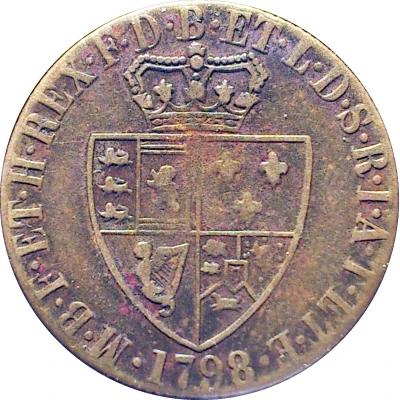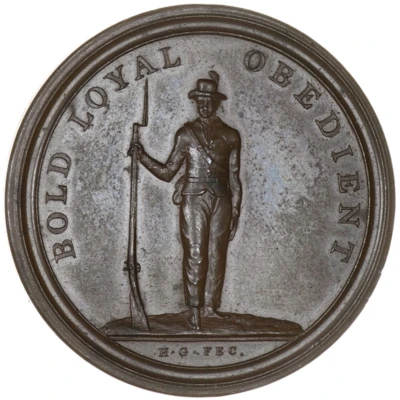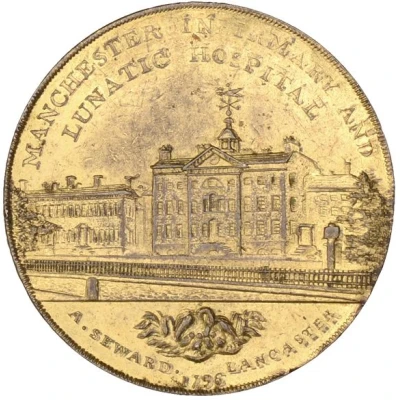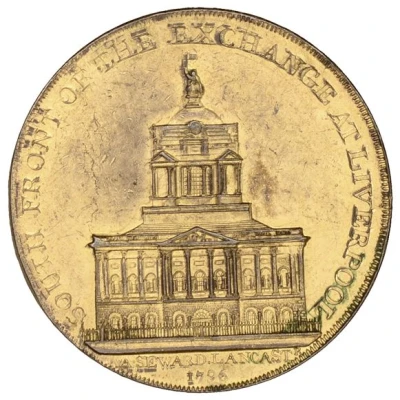


Spade Guinea Gaming Token - George III J. Sainsbury Imitation
1795 (1795-1913) years| Brass | 3.28 g | 25 mm |
| Location | United Kingdom (United Kingdom, British Overseas Territories and Crown Dependencies) |
|---|---|
| Type | Medals › Advertising medallions |
| Year | 1795 (1795-1913) |
| Composition | Brass |
| Weight | 3.28 g |
| Diameter | 25 mm |
| Thickness | 0.5 mm |
| Shape | Round |
| Orientation | Medal alignment ↑↑ |
| Demonetized | Yes |
| Updated | 2024-11-14 |
| Numista | N#25047 |
|---|---|
| Rarity index | 74% |
Reverse
Four shields placed crosswise, crowned - England, Scotland, France, Ireland, with date below. Lettering (original spade guinea legend) around, no border.
Script: Latin
Lettering:
M·B·F·ET·H·REX·F·D·B·ET·L·D·S·R·I·A·T·ET·E
· 1798 ·
Translation:
King of Great Britain, France and Ireland, Defender of the Faith, Duke of Brunswick and Lueneburg, Arch-Treasurer and Elector of the Holy Roman Empire.
MAGNAE BRITANNIAE FRANCIAE ET HIBERNIAE REX FIDEI DEFENSOR BRUNSVICENSIS ET LUNEBURGENSIS DUX SACRI ROMANI IMPERII ARCHI THESAURARIUS ET ELECTOR
Edge
Plain
Comment
Hawkins 61
An advertising token of J Sainsbury, possibly from the last issue of its type, which was distributed in 1913 to celebrate the opening of a new branch at Haymarket, Norwich.
Sainsbury's was founded in 1869 by John James and Mary Ann Sainsbury, who opened their first shop in Drury Lane, London. The token is modelled on the popular gaming counters of the late 19th century, which themselves were modelled on the guineas of George III. The tokens were handed out to customers as a means of spreading the word about the store and to remind them to return.
Catalogues: Cf. Michael Mitchiner, Jetons, Medalets & Tokens, No. 9256 / Neilson 8860



